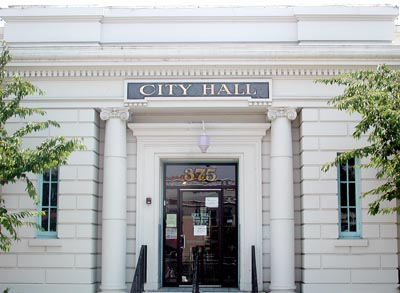A report comparing developer impact fees in the San Joaquin
Valley with those
”
over the hill
”
in the south Santa Clara and Monterey Bay area shows that
Hollister charges the third-least amount of start-up fees for
businesses among the 11 jurisdictions surveyed.
A report comparing developer impact fees in the San Joaquin Valley with those “over the hill” in the south Santa Clara and Monterey Bay area shows that Hollister charges the third-least amount of start-up fees for businesses among the 11 jurisdictions surveyed.
The City of Los Banos conducted the survey at the request of its city council, which wanted to know what the city was doing to assist businesses and whether fee deferrals would spur economic development.
The study, which for comparison purposes included a development scenario in which a 30,000-square-foot supermarket was being proposed on 4.8 acres valued at $2 million, showed that Los Banos charges the least amount of commercial development fees among the cities surveyed, followed by Stockton and Hollister. Numbers four through 11 were Patterson, Modesto, Merced, Salinas, Morgan Hill, Turlock, Gilroy and Tracy.
The fees included charges for fire, water, traffic and sewer impacts, building division fees and public facility fees, among others.
In the scenario, Los Banos charged $321,080, Stockton charged $419,559, and Hollister charged $456,085. Salinas had the seventh-highest fee structure of the 11 cities surveyed, while Morgan Hill was eighth at more than $650,000 and Gilroy was 10th at more than $689,000. Tracy had the highest fees for the sample project, at more than $701,000, more than double Los Banos’s $312,080.
Los Banos Councilman Joe Sousa said the city’s low fees aren’t necessarily the determining factor in whether large companies come to town.
“It’s very rare that folks bring up that startup fee,” he said. “They mention the growth in the area, what the performance says is going to happen in the next five, 10, 15, 20 years.”
Development fees typically are used by cities to pay for things like parks, water and sewer lines, roads and recreational buildings and emergency services facilities.
Sousa said the city needs to be careful about lowering or waving fees charged to developers, because if they don’t pay for infrastructure and amenities up front, city residents eventually will.










